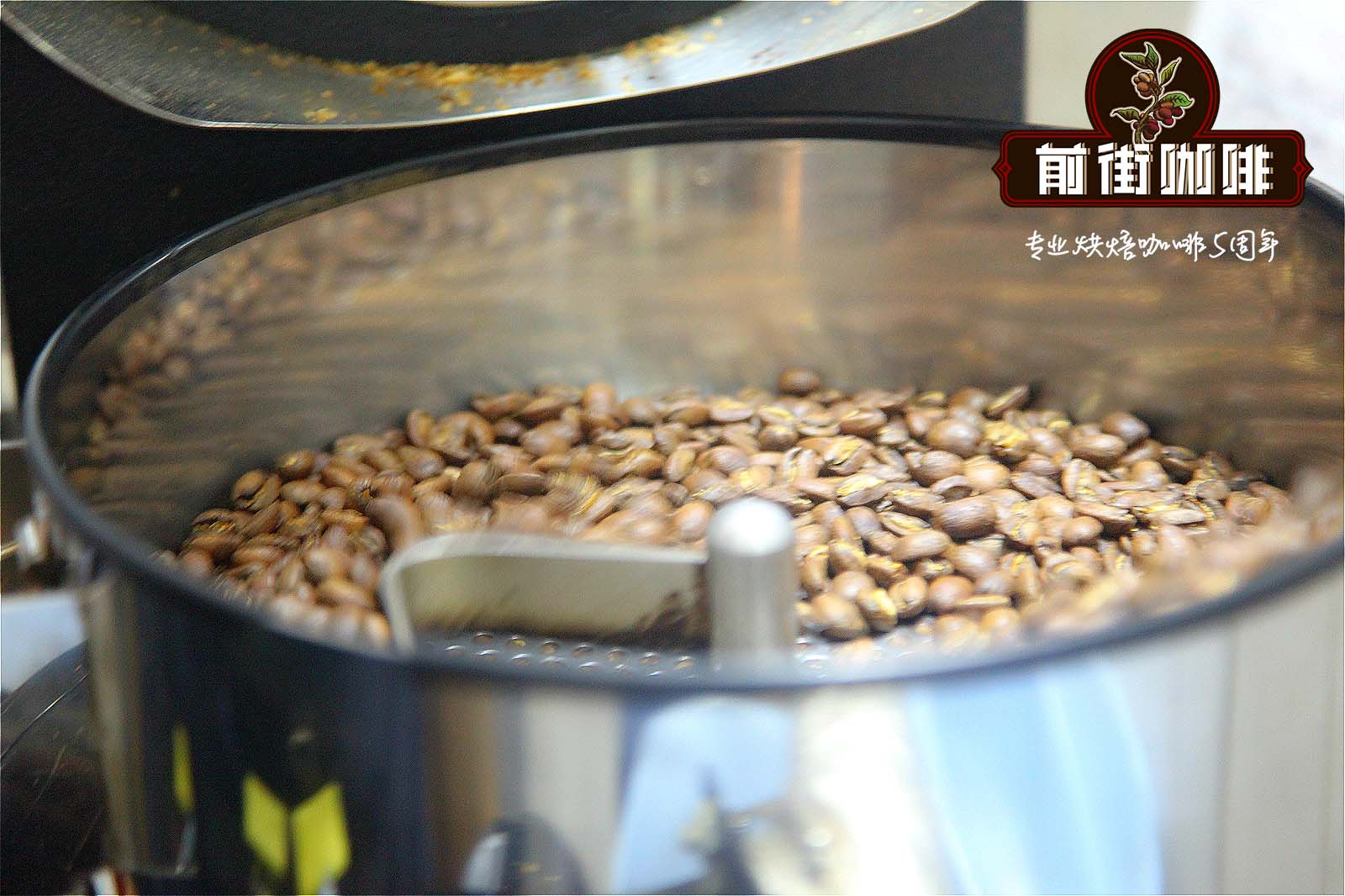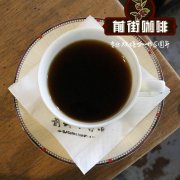What are the high quality black coffee beans? How should I eat coffee beans?

Professional coffee knowledge exchange more coffee bean information please follow the coffee workshop (Wechat official account cafe_style)
The aroma and taste of coffee are produced after roasting. In the process of baking, the moisture of raw coffee beans is slowly released, the weight is reduced, the color deepens, the volume expands, and the aromatic oil is slowly released. In addition, a large amount of chlorogenic acid originally contained in raw beans will gradually disappear with the baking process, releasing good-smelling fruit acid, and its taste varies with the baking time. In the following picture, you can see the change in the shape of coffee beans during roasting.
Whether raw coffee beans leave the factory after various treatments such as sun exposure, water washing, semi-washing and honey treatment, raw beans will maintain a dry condition of low water content (about 12%). In this condition, high-quality coffee beans are easier to preserve, generally packed in sealed bags, and then shipped to local foreign trade merchants after packing in sacks, but the following conditions will still lead to problems with the freshness of raw beans.
1. Rough treatment and pollution
Coffee is actually a kind of fruit, which must be removed by various treatments and treated into hard raw beans, otherwise it will rot. However, not every coffee farmer is well trained in how to handle coffee, and many coffee farmers have poor equipment or backward production conditions, resulting in rough and unscientific coffee processing.
For example, if there are differences in grading, size and maturity of coffee fruits, there may be differences in water content with the same drying time, and if the water content of some raw beans is too high, they may be close to decay as soon as they leave the factory, and mix with good beans. A pot of fine goods that are ready to kill you.
Or in the drying process, because the environment is not clean, other substances around the coffee beans cause pollution. Such as animals, wind and dust, dirty water, etc., may make coffee beans infected with strange taste and bacteria, resulting in accelerated decay of raw coffee beans, which is not fresh as soon as it leaves the factory.
two。 Delivery and warehousing defects
Although the processed raw coffee beans are dry and slow to oxidize, they can be kept fresh. However, linen bags are not completely moistureproof, if coffee beans are exposed to moisture in the process of transportation or warehousing, it will lead to raw beans corruption or accelerated oxidation, even if special plastic bags are added, there is still a risk of breakage and cracking, at this time the good taste of coffee beans will volatilize in the air and may bring uncomfortable mildew or stench.
And the general shipping time and storage time is actually not short, especially the lower grade coffee raw beans, often the quality control of storage is very poor, in fact, how many beans have been sacrificed during this period, in fact, it is really unknown. However, because it is used as cheap commercial coffee beans, it is naturally impossible to use good storage equipment, and those who are sacrificed are consumers who do not know why.
3. Hoarding and keeping it for too long
Even if the transportation or warehousing is normal, the coffee beans are still oxidizing at a slow rate, so if the coffee is placed in the cargo hold for too long for various reasons, such as unsmooth shipping, unsalable, production waiting time and so on, it will still reduce the freshness of raw coffee beans.
Coffee is a futures and will indicate the year of production. Generally speaking, it will be cross-year, at the beginning of the year is to drink last year and the year before last batch, slowly into last year and this year batch. For example, it is common to drink 2016-17 batches at the beginning of 2018, and 2017-18 batches will not be available until a few months later. There are also some coffee raw bean manufacturers who do not use the new year score as the batch standard, for example, 90 + is based on a single year as the batch standard.
As can be seen from the above, if the coffee bean merchants hoarded the used goods of the past, they may have been stored for a long time from 3.4 years ago, then even if such raw coffee beans are properly stored, their flavor will certainly be different from those of fresh batches of raw beans. As for the difference, it depends on the level of storage and the speed of oxidation of the beans themselves. Aged beans are another topic-it's well-managed coffee ripening, but not all coffee beans are suitable for aging.
Although we can not see the real object before the purchase, can not see, smell, peel, chew and other selection steps, but online shopping can still be selected from the following aspects, of course, these aspects are also applicable to physical stores.
A, place of origin
Online, some stores may use coffee beans that do not come from the country of origin, such as some Blue Mountain coffee, but the origin is not Jamaica, and for example, there are only Colombia or Brazil on the bag, but there is no specific information about the manor. it is usually coffee beans from large producing areas, and the coffee of origin is also divided into commercial grade and boutique grade, so it is not only written that Ethiopia is a boutique bean. It is best to be specific to the producing area, traced back to the place of origin of beans, usually not too bad, if you are not very picky, it is OK to taste different places of origin.
Sidamo Sakuran of former Street Coffee as an example, how do you understand the name 'Ethiopian Sun G1 Xida Mohambela Sakui 2.0'?
Coffee beans themselves will have obvious regional characteristics, before buying, understand the flavor of coffee beans, coffee label is also like the red wine label, generally get a lot of information about coffee flavor from the label. We see the name of this coffee: Ethiopia Sunshine Sidamohanbela 2.0, we can get the following information: country: Ethiopia, producing area: Sidamohambela, grading: G1, processing method: sunbathing, the name is Sakui 2.0.
If you buy beans, only Ethiopia, no other information, usually beans from large producing areas.
B, packing date (baking date)
Pay attention to whether the packing date is recent. The shelf life of raw coffee beans is one to two years, and the shelf life of cooked beans after roasting is within 2 months, so choose freshly roasted coffee beans and use them up during the shelf life after purchase. only in this way can you enjoy the most charming aroma and rich taste of coffee.
Freshly roasted coffee beans, because the beans contain a lot of gas, strong respiration, in the extraction, the gas released from the beans, what we see is wonderful and plump bubbles, indifferent to some shallow baked beans, bubbles are not so obvious.
C, Store and Brand
Needless to say, some coffees may be mixed with other kinds of coffee in order to reduce costs. So be careful. For example, in the more expensive coffee beans mixed with cheap coffee beans, or in the good quality coffee beans mixed with the same variety but poor quality coffee beans, which will seriously affect the taste. Therefore, when buying coffee beans, we should try to choose guaranteed shops or brands. Domestic popular home-baked beans will be a little fresher than beans bought in supermarkets. Choose a trustworthy coffee shop.
But many people will say that it tastes good when they try it on the spot, but it doesn't taste good when they buy it and cook it at home. It should be affected by the following reasons
First, the homogenization of particles in domestic and commercial bean mills is different, uniformity and fineness.
In addition, the quality of water selected by some coffee shops may be relatively better than that of household tap water.
If you make coffee by hand, the material of the filter cup, the material of the hand pot. And so on, it will have a little impact.
Qianjie coffee: Guangzhou bakery, the store is small but a variety of beans, you can find a variety of unknown beans, but also provide online store services. Https://shop104210103.taobao.com
Important Notice :
前街咖啡 FrontStreet Coffee has moved to new addredd:
FrontStreet Coffee Address: 315,Donghua East Road,GuangZhou
Tel:020 38364473
- Prev

What are the characteristics of East Timor alpine organic coffee? The cultivation of coffee in East Timor
The Coffee Workshop (official Wechat account cafe_style) although Timor-Leste's image as a coffee-producing country is still a bit low-key, the country's history as a coffee producer is unique and its commitment as a specialty coffee producer is enormous. The Portuguese introduced coffee to East Timor in the 1860s. It's very...
- Next

Guatemala | Waykan in Quiche province United Farm washing iron pickup truck, Kaddura, card
Professional coffee knowledge exchange more coffee bean information please follow the coffee workshop (Wechat official account cafe_style) Guatemala | Waykan, Keiche province United Farm washed iron pickup card, Kaddura, Kaduai flavor? Coffee has saved Guatemala's economy in the past century. It is estimated that there are about 120000 thousand producers there.
Related
- Detailed explanation of Jadeite planting Land in Panamanian Jadeite Manor introduction to the grading system of Jadeite competitive bidding, Red bid, Green bid and Rose Summer
- Story of Coffee planting in Brenka region of Costa Rica Stonehenge Manor anaerobic heavy honey treatment of flavor mouth
- What's on the barrel of Blue Mountain Coffee beans?
- Can American coffee also pull flowers? How to use hot American style to pull out a good-looking pattern?
- Can you make a cold extract with coffee beans? What is the right proportion for cold-extracted coffee formula?
- Indonesian PWN Gold Mandrine Coffee Origin Features Flavor How to Chong? Mandolin coffee is American.
- A brief introduction to the flavor characteristics of Brazilian yellow bourbon coffee beans
- What is the effect of different water quality on the flavor of cold-extracted coffee? What kind of water is best for brewing coffee?
- Why do you think of Rose Summer whenever you mention Panamanian coffee?
- Introduction to the characteristics of authentic blue mountain coffee bean producing areas? What is the CIB Coffee Authority in Jamaica?

